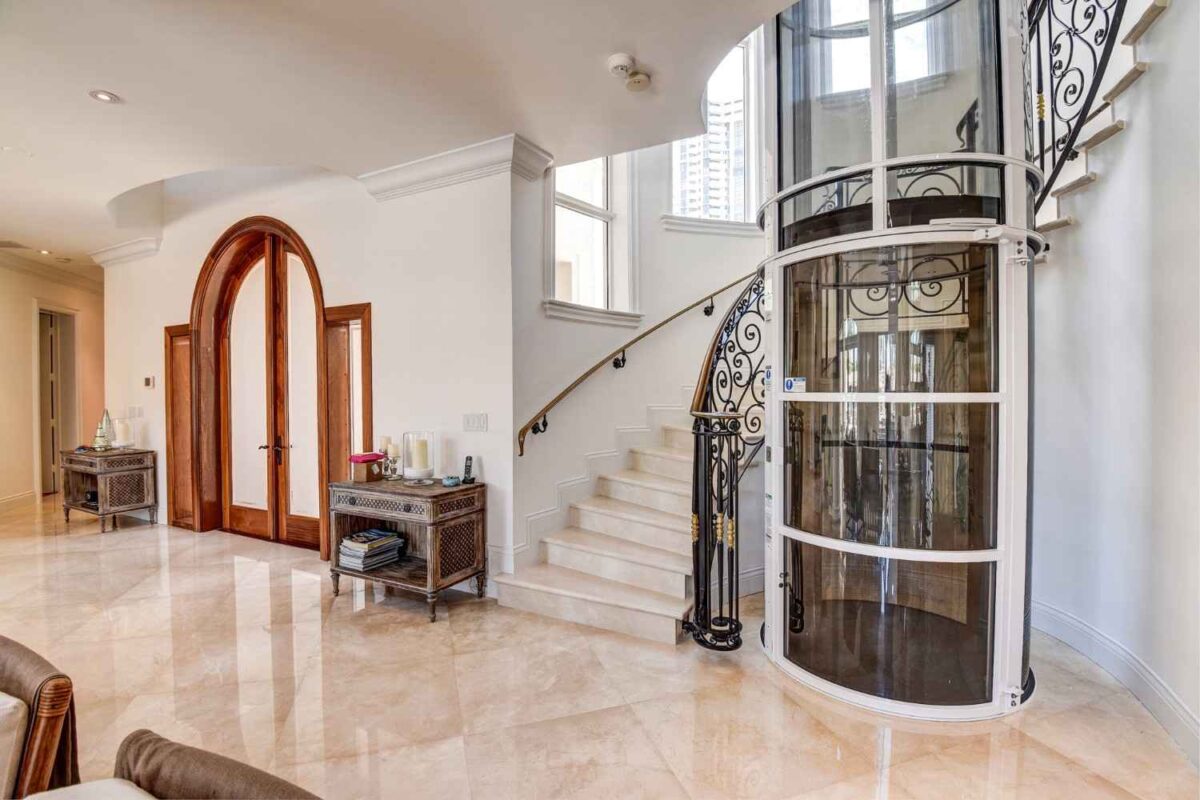
Di zaman modern ADalam dunia arsitektur, bangunan lebih dari sekedar beton dan baja—itu adalah pernyataan. Dari hunian mewah hingga hotel butik dan perkantoran bertingkat tinggi di Jakarta atau Surabaya, terdapat tren yang berkembang untuk menciptakan ruang yang mencerminkan gaya dan identitas. Meskipun fasad dan lobi sering kali mendapat sorotan, ada satu ruang yang sering diabaikan namun berdampak diam-diam: interior elevator.
Ya, lift sederhana. Ini bukan hanya sebuah kotak logam yang mengangkut orang naik dan turun. Ini adalah ruangan yang bergerak, sering kali menjadi salah satu hal pertama yang dialami pengunjung. Dan pengalaman itu—seperti jabat tangan—penting.
Artikel ini mengeksplorasi bagaimana desain interior elevator yang bijaksana tidak hanya terlihat bagus—tetapi juga meninggikan keseluruhan bangunan. Kami akan memeriksa tren estetika, fungsionalitas, personalisasi, dan mengapa ruang kecil ini patut mendapat perhatian besar.
Peran Interior Lift pada Bangunan Modern
Meningkatkan Estetika Secara Keseluruhan
Bayangkan melangkah ke dalam lift yang dilapisi panel kayu hangat, pencahayaan LED sekitar, dan lapisan kaca yang ramping. Tidak terasa seperti lift—terasa seperti bagian dari kepribadian bangunan. Di Indonesia, di mana keanggunan budaya sering bertemu dengan minimalis modern, interior elevator menawarkan peluang untuk memadukan kedua dunia.
Bahan-bahan seperti marmer, cermin terukir, baja tahan karat, dan bahkan lampu LED cerdas menghadirkan kehidupan pada ruang terbatas. Alih-alih terasa seperti sangkar baja, elevator menjadi kelanjutan visual dari keseluruhan desain bangunan.
Berkaca pada Identitas Bangunan
Setiap bangunan menceritakan sebuah kisah. Ada yang bilang “profesional dan halus”, ada pula yang bilang “mewah dan santai”. Interior elevator harus menggemakan suara itu. Bahasa desain yang konsisten penting di apartemen kelas atas di Bali atau gedung perkantoran premium di Jakarta. Lobi kayu bergaya pedesaan diikuti dengan interior lift yang dingin dan tak bernyawa? Itu mengganggu mood. Namun ketika desain mengalir mulus dari pintu masuk hingga lift, pengalamannya menjadi mendalam.
Menciptakan Kesan Pertama yang Kuat
Kesan pertama terbentuk dalam hitungan detik. Jika lift adalah ruang tertutup pertama yang dialami seseorang di gedung Anda, mengapa Anda tidak ingin lift tersebut terkesan?
Interior elevator yang apik menciptakan momen jeda—kesempatan bagi seseorang untuk melihat sekeliling dan berpikir, “Wow, mereka memikirkan segalanya.” Baik itu calon klien, penyewa, atau tamu, kesan-kesan ini melekat.
Manfaat Utama Desain Interior Lift
Daya Tahan Tanpa Mengurangi Kecantikan
Mari kita bicara kepraktisan. Lift tahan terhadap lalu lintas pejalan kaki setiap hari, bagasi terbentur, kereta dorong tergores, dan banyak lagi. Di sinilah peran material seperti perunggu, aluminium, atau baja tahan karat. Tidak hanya terlihat tajam, namun juga dibuat tahan lama.
Desain bukan hanya tentang terlihat bagus—tetapi tentang tetap bagus. Khususnya pada bangunan komersial atau perumahan yang sibuk, material yang tepat mengurangi keausan dan menjaga biaya pemeliharaan tetap rendah.
Personalisasi & Pembaruan Mendatang
Desain berubah. Begitu juga preferensi penyewa. Itu sebabnya interior elevator yang modular dan dapat disesuaikan semakin mendapat daya tarik. Pemilik bangunan di Indonesia, terutama di daerah perkotaan dimana tren berkembang dengan cepat, mendapatkan keuntungan dari sistem interior yang fleksibel dan dapat dengan mudah disegarkan.
Ingin finishing kayu yang lebih tradisional saat ini tetapi berencana untuk tampilan yang lebih minimalis tahun depan? Tidak masalah. Sistem panel dinding kabin khusus membuat peningkatan menjadi cepat dan hemat biaya.
Perlindungan Terhadap Kerusakan
Jujur saja—elevator terpukul. Mulai dari anak-anak yang menyeret skuter hingga pekerja yang memindahkan furnitur, kerusakan tidak bisa dihindari. Desain interior yang bijaksana mengantisipasi hal ini. Menggabungkan panel bawah yang tahan gores atau diperkuat dapat menjaga keanggunan sekaligus melindungi nilai jangka panjang.
Pilihan Desain Interior Lift Populer
Sistem Panel Dinding Kabin Khusus
Sistem ini seperti potongan puzzle—modular, modern, dan praktis. Mereka mengizinkan pengelola atau pemilik gedung untuk menukar panel tanpa renovasi penuh. Ini adalah pilihan populer di kondominium kelas atas atau menara korporat di Indonesia, yang bertujuan untuk penyegaran tanpa harus menghentikan operasional selama berminggu-minggu.
Wajah Pintu Masuk Lobi
Perjalanan lift dimulai bahkan sebelum pintu terbuka. Bagian depan lobi mengatur suasana, sering kali mencerminkan tekstur atau warna dinding untuk harmoni visual. Bayangkan pintu masuk lobi berlapis granit yang bertransisi menjadi lift dengan warna dan pencahayaan yang serasi—ini menciptakan sebuah cerita, bukan keterputusan.
Solusi Khusus & Opsi Anggaran
Tidak semua bangunan memiliki anggaran mewah, dan itu tidak masalah. Interior elevator tidak harus mahal untuk terlihat bagus. Laminasi bertekanan tinggi, pembungkus vinil pintar, atau aluminium yang disikat dapat memberikan tampilan modern tanpa menghabiskan banyak uang.
Di pasar perumahan kelas menengah yang terus berkembang di Indonesia, keseimbangan antara keterjangkauan dan estetika merupakan sebuah terobosan.
Memilih Desain Interior Lift yang Tepat
Selaras dengan Tema Bangunan
Ini mungkin terdengar jelas, tetapi Anda akan terkejut betapa seringnya interior elevator terasa seperti sebuah renungan. Bangunan Anda mungkin memancarkan ketenangan seperti Zen dengan warna netral lembut dan tanaman dalam ruangan—tetapi kemudian elevatornya meneriakkan futurisme metalik. Pemutusan sambungan seperti itu dapat mengganggu keseluruhan pengalaman.
Sebaliknya, gunakan palet warna, pencahayaan, dan material yang membawa identitas bangunan Anda dari lobi hingga lift.
Berkolaborasi dengan Para Ahli
Desainer interior, arsitek, dan spesialis elevator masing-masing menghadirkan perspektif berbeda. Berkolaborasi dengan mereka memastikan interior elevator Anda indah, aman, patuh, dan terawat. Wawasan mereka dapat membantu menyeimbangkan kreativitas dengan kendala teknis.
Memilih Perusahaan Terkemuka
Reputasi penting—terutama dalam hal yang sensitif terhadap keselamatan seperti interior elevator. Pilih perusahaan dengan pengalaman yang terbukti dalam “lift untuk rumah” atau aplikasi komersial. Keahlian lokal memastikan hasil yang lebih baik di Indonesia dimana kondisi lingkungan seperti kelembapan dapat mempengaruhi material.
Pentingnya Perawatan & Pembaruan Secara Reguler
Desain bukanlah permainan “atur dan lupakan”. Interior elevator memerlukan pembaruan sesekali agar tetap segar dan fungsional. Pembersihan rutin, pemeriksaan panel, dan pemeliharaan pencahayaan menjaga segala sesuatunya tetap terlihat bagus dan membantu mengidentifikasi masalah sebelum menjadi masalah yang merugikan.
Tren desain berkembang. Sebuah ruangan yang terasa mutakhir lima tahun lalu mungkin terasa ketinggalan jaman saat ini. Memperbarui interior elevator Anda setiap 5–7 tahun memastikan interior tersebut tetap selaras dengan merek dan estetika Anda saat ini.
Selain itu, ingatlah bahwa interior yang diperbarui dapat membantu bangunan mematuhi peraturan keselamatan dan aksesibilitas yang terus berkembang—suatu keharusan bagi ruang publik atau kompleks perumahan.
Kesimpulan
Interior elevator yang dirancang dengan baik lebih dari sekadar dekorasi—ini adalah sebuah pernyataan. Hal ini dapat mencerminkan nilai bangunan Anda, meningkatkan pengalaman pengguna, dan bahkan menambah nilai properti jangka panjang. Dampaknya nyata baik Anda bekerja dengan material mewah atau solusi terjangkau.
Bagi pemilik dan pengembang gedung di Indonesia, peluang untuk menciptakan interior elevator yang imersif, penuh gaya, dan fungsional terbuka lebar. Baik untuk kebutuhan perumahan atau komersial, interior yang tepat dapat meningkatkan persepsi orang dan seluruh persepsi Anda terhadap bangunan Anda.
Pada Lift SWIFT, kami memahami kekuatan desain yang bijaksana. Lift rumah kami dibuat dengan mempertimbangkan keindahan dan fungsi—dibuat untuk gaya hidup Indonesia dengan presisi Swedia. Jika Anda siap mengubah ruang Anda dari dalam ke luar, mari kita bicara.
Hubungi kami hari ini untuk mengeksplorasi bagaimana kami dapat mewujudkan visi interior elevator Anda.
FAQ
Ini secara signifikan membentuk persepsi pengunjung dan memperkuat identitas bangunan sejak pertama kali dikendarai.
Baja tahan karat, kayu hangat, kaca bertekstur, atau panel LED menawarkan keanggunan dan daya tahan.
Kemungkinan besar, pencahayaan, finishing dinding, atau seberapa selarasnya dengan gaya bangunan secara keseluruhan.
Keseimbangan yang sehat memastikan daya tarik visual, terutama pada bangunan dengan lalu lintas tinggi tanpa mengorbankan fungsi.
Setiap 5–7 tahun adalah waktu yang ideal untuk tetap segar dan mematuhi standar keselamatan dan desain.










